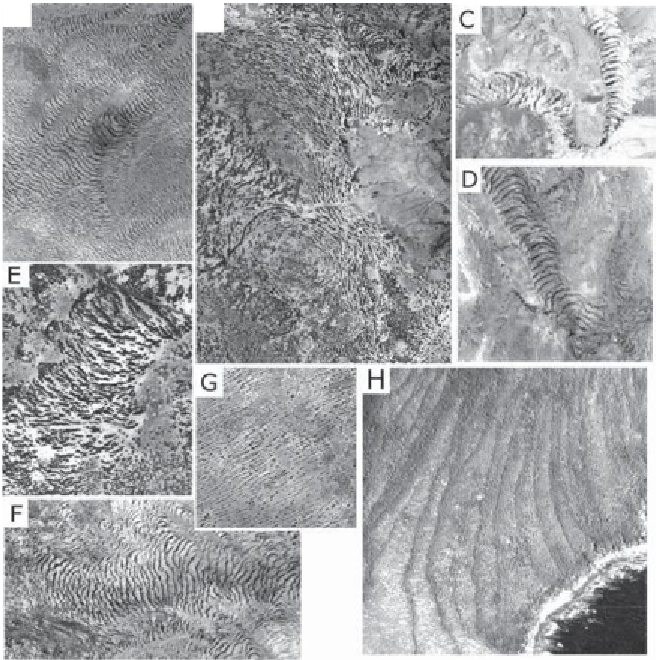Environmental Engineering Reference
In-Depth Information
(a)
(b)
(c)
(d)
(e)
(g)
(h)
(f)
Figure 5.1. Example of aerial photographs showing vegetation patterns (tiger bush);
(a) Somalia (9
◦
20
N, 48
◦
46
E), (b) Niger (13
◦
21
N, 2
◦
5
E), (c) Somalia (9
◦
32
N,
49
◦
19
E), (d) Somalia (9
◦
43
N, 49
◦
17
E), (e) Niger (13
◦
24
N, 1
◦
57
E), (f ) Somalia
(7
◦
41
N, 48
◦
0
E), (g) Senegal (15
◦
6
N, 15
◦
16
W), and (h) Argentina (54
◦
51
S,
65
◦
17
W) (after
Borgogno et al.
,
2009
).
(
Worral
,
1959
,
1960
;
White
,
1969
,
1971
;
Bernd
,
1978
;
Mabbutt and Fanning
,
1987
;
Montana
,
1992
;
Bergkamp et al.
,
1999
;
Dunkerley and Brown
,
1999
;
Eddy et al.
,
1999
;
Valentin et al.
,
1999
).
The study of patterns is often motivated by the possibility to infer from their oc-
currence and geometrical features useful information on the underlying processes.
In recent years, several authors investigated the mechanisms of pattern formation
in nature and their response to changes in environmental conditions or disturbance
regime. For example, in the case of landscape ecology, these studies related ve-
getation patterns to the underlying ecohydrological processes (e.g.,
Schlesinger
et al.
,
1990
;
Klausmeier
,
1999
;
Barbier et al.
,
2006
;
Ridolfi et al.
,
2007
), the na-
ture of the interactions among plant individuals (e.g.,
Lefever and Lejeune
,
1997
;





Search WWH ::

Custom Search